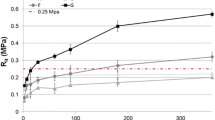Abstract
This work was undertaken within the framework of an environmental follow-up program of the Taparura zone after completion of depollution and artificial beach nourishment works along a coastline of 6 km in the northern coast of Sfax town, Tunisia. The realized recognition investigation aimed to explore the geomechanical characteristics of the surface sediment in the coastal fringe of the project site by evaluating its bearing capacity up to 500 m in the seaside from the new coastline in order to check the safety of the users. A Standard Penetration Test (SPT) with a penetration of approximately 45 cm concerned a total of 288 coastal stations along the zone. The results provided a detailed description of the geotechnical aspects of the sediment including the bearing capacity of the beach corresponding to the relaxed position on two feet, and the user load in motion on one foot, or half a foot. Finally, prognostic maps were respectively drawn that can serve as a guide for the safety of the beach users in a contribution to a local beach occupation plan.









Similar content being viewed by others
References
ASTM (1984), Designation: D 1586-84 standard test method for penetration test and split-barrel sampling of soils: American Society for Testing and Materials: annual book of standards, Vol 408 Soil and Rock (I): D 420–D-4914, pp. 137–141
Callaert B, Hentati R (2011) Sustainable development in the City of Sfax (Tunisia) - Taparura project, IWWG proceedings Sardinia, p12
Fletcher, G. F. A. (1965) Standard Penetration Test: Its uses and abuses. Journal Soil Mechanics Foundations Division, ASCE, 91(SM4), pp. 67–75
Gouider M, Choura M (2013) Sfax City southern coast reclamation drawn on the Taparua project acquired know-how, proceedings of the 26th AFA international fertilizers technology conference, Tunisia P56
Koffler A, Choura M, Bendriss A, Zengerink E (2008) Geosynthetics in protection against erosion for river and coastal banks and marine and hydraulic construction. J Coast Conserv 12:11–17
Lutenegger AJ (2008) The Standard Penetration Test – more than just a one number test, Geotechnical and Geophysical Site Characterization – Huang & Mayne (eds) Taylor & Francis Group, London
Nassaji F, Kalantari B (2011) SPT capability to estimate Undrained shear strength of fine-grained soils of Tehran, Iran. The. Electron J Geotech Eng 16:42
NF P94–116 (1991) Sols : reconnaissance et essais – Essai de pénétration au carottier (Indice de classement : P94–116)
Riggs CO (1986) North American Standard Penetration Test Practice: An Essay, in Use of in Situ Tests in Geotechnical Engineering: ASCE Geotechnical Special Publication No 6
Robertson K, Campanella RG, Wightman A (1983) SPT-CPT correlations. ASCE J Geotech Eng 109(11):1449–1459
Rogers JD (2006) Subsurface Exploration using the Standard Penetration Test and the Cone Penetrometer Test, the Geological Society of America. Environ Eng Geosci XIII(2):161–179
Skempton AW (1986) Standard penetration test procedures and the effects in sands of overburden pressure, relative density, particle size, aging and overconsolidation. Geotechnique 36(3):425–447
Tayibi H, Mo C, Lopez FA, Alguacil FJ, Lopez-Delgado A (2009) Environmental impact and management of phosphogypsum. J Environ Manag 90:2377–2386
Terzaghi K, Peck RB (1967) Soil mechanics in engineering practice. Wiley, New York 729
Zatuwa M (2005) Beware, soft ground and the standard penetration test (in Japanese) Public Works Research Institute University of Missouri - Rolla Class notes on the SPT
Acknowledgements
This work was done with the collaboration of the Company of Studies and Development of the Northern Coast of the City of Sfax as the managing institution of the Taparura project, and the Tunisian Agency of Coastal Protection and Management as a contribution to the realization of a Beach Occupation Plan.
Author information
Authors and Affiliations
Corresponding author
Rights and permissions
About this article
Cite this article
Hamza, W., Cherif, F. & Choura, M. Exploration of the bearing capacity of Taparura Artificial Beach using the standard penetration test. J Coast Conserv 22, 315–324 (2018). https://doi.org/10.1007/s11852-017-0579-4
Received:
Revised:
Accepted:
Published:
Issue Date:
DOI: https://doi.org/10.1007/s11852-017-0579-4




